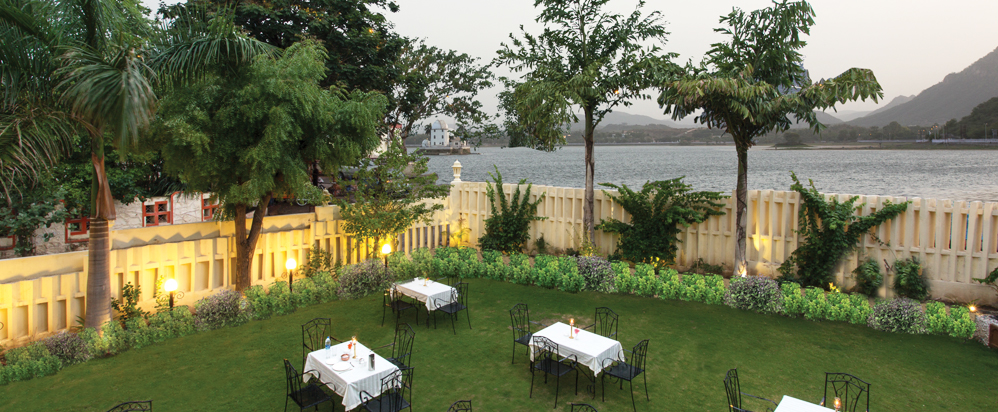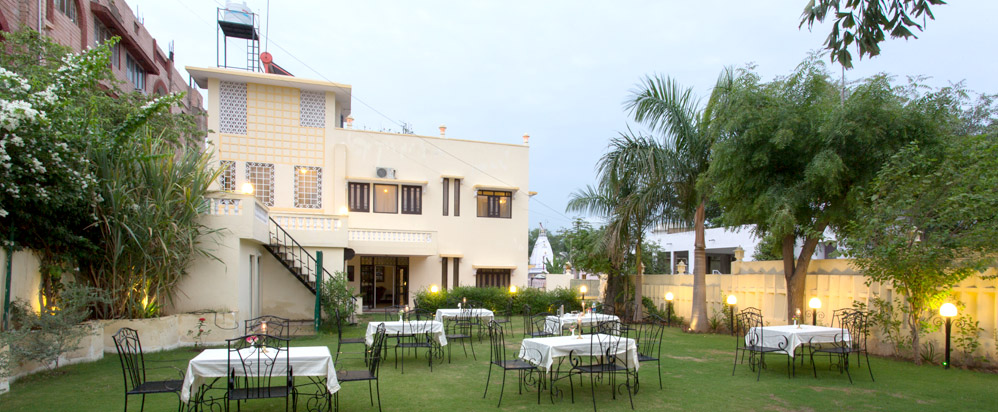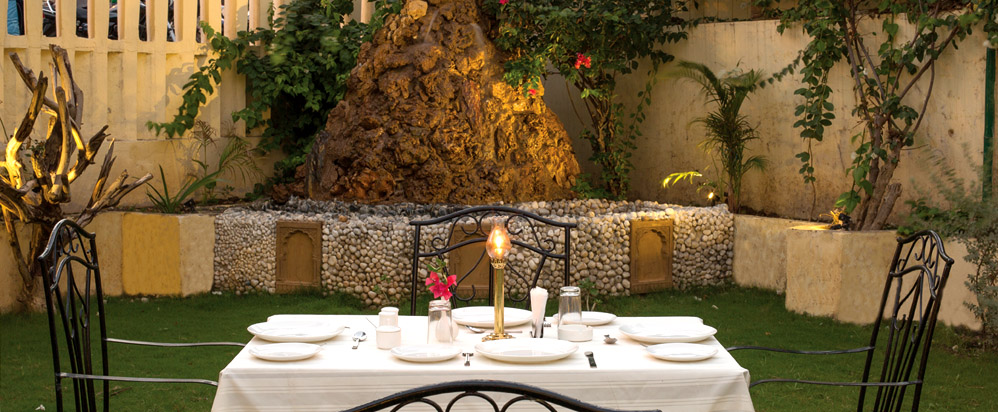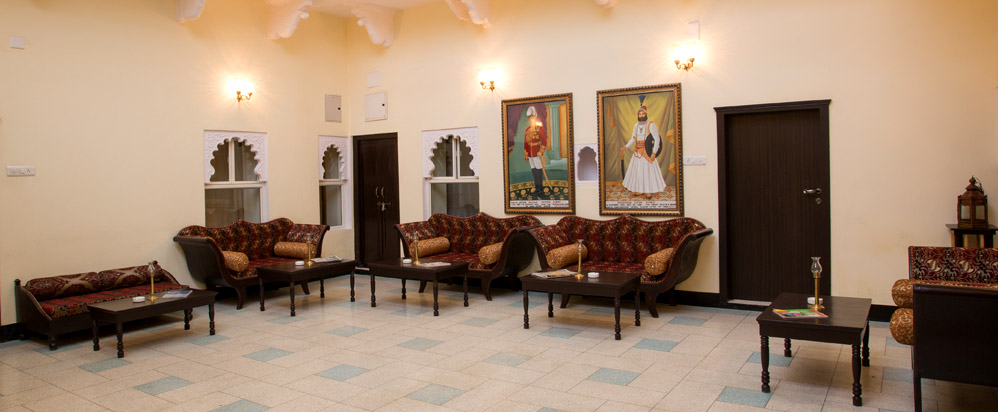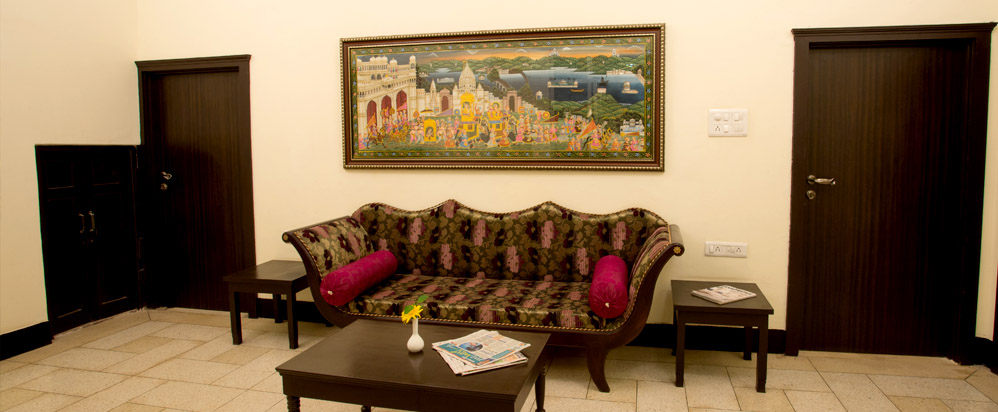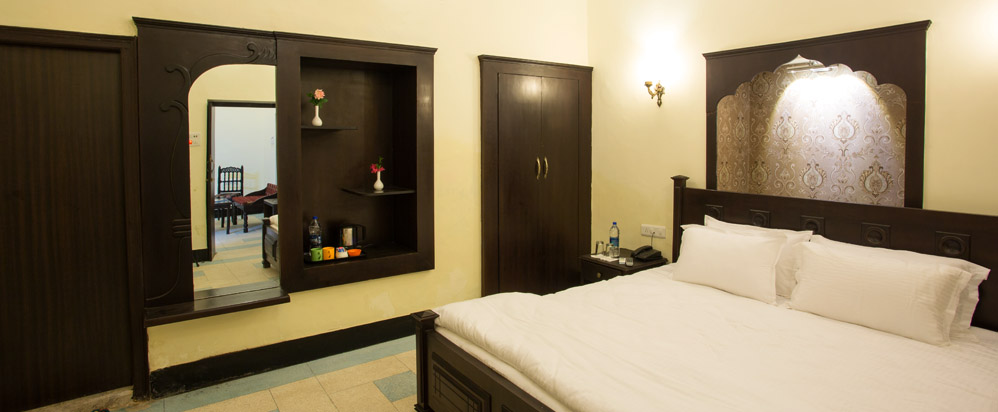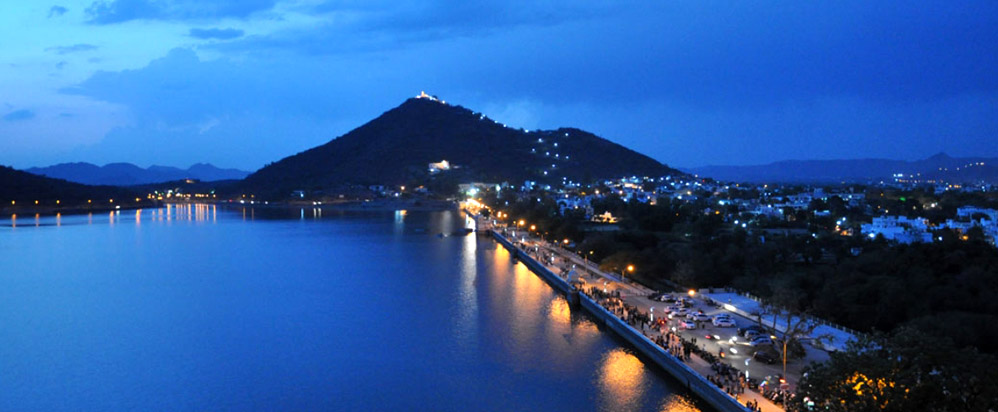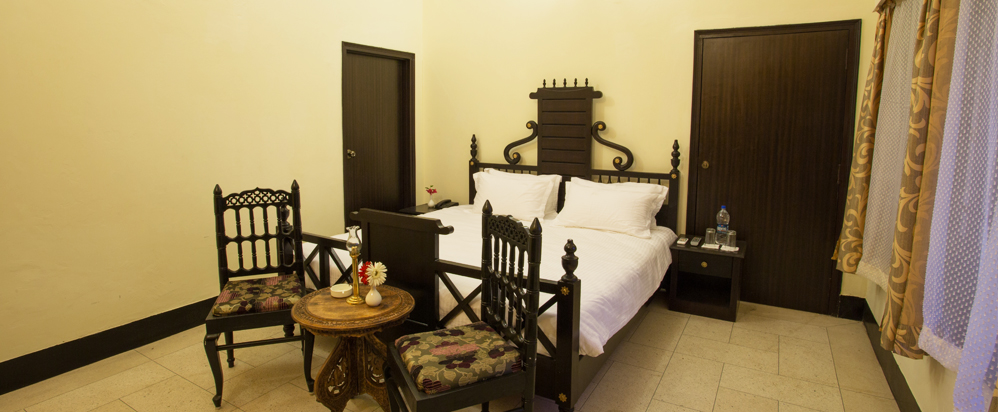About Udaipur
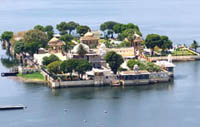 Udaipur was founded in 1559 by Maharana Udai Singh II as the final capital of the eastwhile Mewar kingdom, located to the southwest of Nagda, on the Banas River, the first capital of the Mewar kingdom. Legend has it that Maharana Udai Singh II came upon a hermit while hunting in the foothills of the Aravalli Range. The hermit blessed the king and asked him to build a palace on the spot, assuring him it would be well protected. Udai Singh II consequently established a residence on the site. In 1568 the Mughal emperor Akbar captured the fort of Chittor, and Udai Singh moved the capital to the site of his residence, which became the city of Udaipur.
Udaipur was founded in 1559 by Maharana Udai Singh II as the final capital of the eastwhile Mewar kingdom, located to the southwest of Nagda, on the Banas River, the first capital of the Mewar kingdom. Legend has it that Maharana Udai Singh II came upon a hermit while hunting in the foothills of the Aravalli Range. The hermit blessed the king and asked him to build a palace on the spot, assuring him it would be well protected. Udai Singh II consequently established a residence on the site. In 1568 the Mughal emperor Akbar captured the fort of Chittor, and Udai Singh moved the capital to the site of his residence, which became the city of Udaipur.
Lake Palace
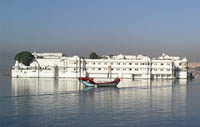 The Lake Palace was built in 1743-1746. It is made of marble and is situated on Jag Niwas island in Lake Pichola. It was originally built as a royal summer palace, but is now a luxury 5 Star hotel, operating under the “Taj Hotels Resorts and Palaces” banner.
The Lake Palace was built in 1743-1746. It is made of marble and is situated on Jag Niwas island in Lake Pichola. It was originally built as a royal summer palace, but is now a luxury 5 Star hotel, operating under the “Taj Hotels Resorts and Palaces” banner.
City Palace
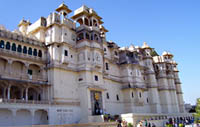 Standing on the east bank of Lake Pichola is a massive series of palaces built at different times from 1559. The balconies of the palace provide panoramic views of the “Jag Niwas”. They also have views of Jag Mandir on one side and the city of Udaipur on the other. Its main entrance is through the triple-arched gate – the Tripolia, built in 1725. The way now leads to a series of courtyards, overlapping parations, terraces, corridors and gardens. There is a Suraj Gokhda, where the maharanas of Mewar presented themselves in the times of trouble to the people to restore confidence. The Mor-chowk (Peacock courtyard), gets its name from the mosaics in glass decorating its walls. The chini chitrashala is noteworthy while a series of wall paintings of Krishna are on display in Bhim Vilas. There are numerous other palaces such as Dilkhush mahal, Sheesh mahal, Moti mahal and Krishna vilas – in memory of a princess of striking beauty who poisoned herself to avert a bloody battle for her hand by rival princes. Now the palace contains many antique articles, paintings, decorative furniture and utensils and attracts thousands of visitors every day.
Standing on the east bank of Lake Pichola is a massive series of palaces built at different times from 1559. The balconies of the palace provide panoramic views of the “Jag Niwas”. They also have views of Jag Mandir on one side and the city of Udaipur on the other. Its main entrance is through the triple-arched gate – the Tripolia, built in 1725. The way now leads to a series of courtyards, overlapping parations, terraces, corridors and gardens. There is a Suraj Gokhda, where the maharanas of Mewar presented themselves in the times of trouble to the people to restore confidence. The Mor-chowk (Peacock courtyard), gets its name from the mosaics in glass decorating its walls. The chini chitrashala is noteworthy while a series of wall paintings of Krishna are on display in Bhim Vilas. There are numerous other palaces such as Dilkhush mahal, Sheesh mahal, Moti mahal and Krishna vilas – in memory of a princess of striking beauty who poisoned herself to avert a bloody battle for her hand by rival princes. Now the palace contains many antique articles, paintings, decorative furniture and utensils and attracts thousands of visitors every day.
Fateh Sagar Lake
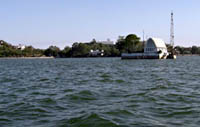 Fateh Sagar Lake is situated in the north of Lake Picholas. It was originally built by Maharana Jai Singh in the year 1678 AD, but later on reconstructed and extended by Maharana Fateh Singh after much destruction was caused by heavy rains. In 1993-1994, the water vanished from the lake, but in 2005-2006, the lake regained its water.
Fateh Sagar Lake is situated in the north of Lake Picholas. It was originally built by Maharana Jai Singh in the year 1678 AD, but later on reconstructed and extended by Maharana Fateh Singh after much destruction was caused by heavy rains. In 1993-1994, the water vanished from the lake, but in 2005-2006, the lake regained its water.
Lake Pichola
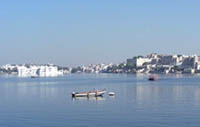 Lake Pichola has two islands, Jag Niwas and the Jag Mandir. This lake is 4 km long and 3 km wide, originally built by Maharana Udai Singh II. There are many ghats, like the bathing and washing ghats, which can be approached through boats from the City Palace of Udaipur (Bansi Ghat). In the heart of the lake the Lake Palace stands, which is now converted into a heritage palace hotel. The lake remains fairly shallow even during heavy rains, and gets dry easily in times of severe drought.
Lake Pichola has two islands, Jag Niwas and the Jag Mandir. This lake is 4 km long and 3 km wide, originally built by Maharana Udai Singh II. There are many ghats, like the bathing and washing ghats, which can be approached through boats from the City Palace of Udaipur (Bansi Ghat). In the heart of the lake the Lake Palace stands, which is now converted into a heritage palace hotel. The lake remains fairly shallow even during heavy rains, and gets dry easily in times of severe drought.
Gulab Bagh and Zoo
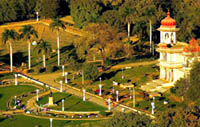 A rose garden laid out by Maharaja Sajjan Singh is situated near the palace on the east side of Lake Pichhola. A library in the garden has a collection of ancient handwritten manuscripts and books. Some of the part of the Satyarth Prakash have been written in this library. Styarth Prakash stup is situated in Gulab Bagh. Within the garden, there is a zoo with tigers, leopards, Chinkara gazelle, birds, and many wild animals. Children can enjoy mini train, track ofNehru Garden on an island in Fatah Sagar Lake which covers the main part of the garden and the zoo.
A rose garden laid out by Maharaja Sajjan Singh is situated near the palace on the east side of Lake Pichhola. A library in the garden has a collection of ancient handwritten manuscripts and books. Some of the part of the Satyarth Prakash have been written in this library. Styarth Prakash stup is situated in Gulab Bagh. Within the garden, there is a zoo with tigers, leopards, Chinkara gazelle, birds, and many wild animals. Children can enjoy mini train, track ofNehru Garden on an island in Fatah Sagar Lake which covers the main part of the garden and the zoo.
Sahelion ki Bari
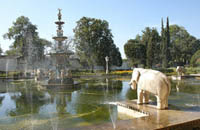 Maharana Sangram Singh built this Garden in the mid-18th century. The ‘Garden of the Maidens’ brings to mind the lifestyle of the ladies of the court. These delightful gardens reflect their discreet and impeccable tastes. There are four pools with dainty kiosks. All around are flowerbeds, lawns, pools and fountains protected by a series of walls and trees offering plenty of shade. The fountains of the Sahelion ki Bari function solely by water pressure and no pumps are used. The garden has a lotus pool and a sitting room decorated with paintings and glass mosaic. The whole ambience is flavored by reminiscence of those beautiful belles enjoying themselves in lavish environs.
Maharana Sangram Singh built this Garden in the mid-18th century. The ‘Garden of the Maidens’ brings to mind the lifestyle of the ladies of the court. These delightful gardens reflect their discreet and impeccable tastes. There are four pools with dainty kiosks. All around are flowerbeds, lawns, pools and fountains protected by a series of walls and trees offering plenty of shade. The fountains of the Sahelion ki Bari function solely by water pressure and no pumps are used. The garden has a lotus pool and a sitting room decorated with paintings and glass mosaic. The whole ambience is flavored by reminiscence of those beautiful belles enjoying themselves in lavish environs.
Sajjangarh Palace
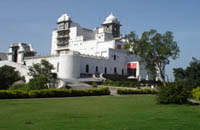 Monsoon Palace or Sajjangarh Palace is a hilltop palace located at Bansdara Mountain peak at about 944 mtr above sea level. Maharana Sajjan Singh constructed it in 1883 for using it as summer retreat for Mewar Kings. Another big pose for its construction is to watch the progress of Monsoon clouds.
Monsoon Palace or Sajjangarh Palace is a hilltop palace located at Bansdara Mountain peak at about 944 mtr above sea level. Maharana Sajjan Singh constructed it in 1883 for using it as summer retreat for Mewar Kings. Another big pose for its construction is to watch the progress of Monsoon clouds.
This Monsoon Palace is situated at such an altitude that it presents magnificent views of Lake Pichola, Aravalli mountains and surrounding countryside. Visitors also love the sunset of Sajjangarh Palace. There is also Sajjangarh Wildlife Sanctuary which encircles the palace. Now it is a forest department property and open for visitors.
Moti Magri
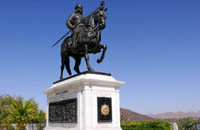 Moti Magri is one of the interesting tourist attractions of Udaipur, the city of dawn. You will see a statue of Maharana Pratap on the top of the Moti Magri Udaipur. Moti Magri or the Pearl Hill is a beautiful hill from where you can enjoy the bird-eye view of the Fateh Sagar Lake. The statue of erstwhile Rajput ruler Maharana Pratap Singh with his horse Chetak or Pratap Memorial was built to pay homage to this legendary Rajput hero. The statue in this Pratap Memorial on the top of Moti Magri Udaipur is made of bronze.
Moti Magri is one of the interesting tourist attractions of Udaipur, the city of dawn. You will see a statue of Maharana Pratap on the top of the Moti Magri Udaipur. Moti Magri or the Pearl Hill is a beautiful hill from where you can enjoy the bird-eye view of the Fateh Sagar Lake. The statue of erstwhile Rajput ruler Maharana Pratap Singh with his horse Chetak or Pratap Memorial was built to pay homage to this legendary Rajput hero. The statue in this Pratap Memorial on the top of Moti Magri Udaipur is made of bronze.
Doodh Talai
A rock and fountain garden and the sunset point from which one can enjoy the sunset view in Lake Pichhola and a panoramic view of the old city. Also one can enjoy the Aerial tramway (rope way) which connects one of the dudh talai gardens to Karni Mata temple.
Badi Lake
A lake in the village of Badi built at a cost of Rs. 688,000 (Lakh 6,88,000) by Maharana Raj Singh I (1652-1680) to counteract the devastating effects of a famine. He named it Jiyan Sagar after his mother Jana Devi. The lake covers an area of 155 sq. km., and has an embankment 180 m. long and 18 m. wide, which is graced by three artistic chhatris (kiosks or pavilions). During the drought of 1973, the lake supplied water to the people of Udaipur.

